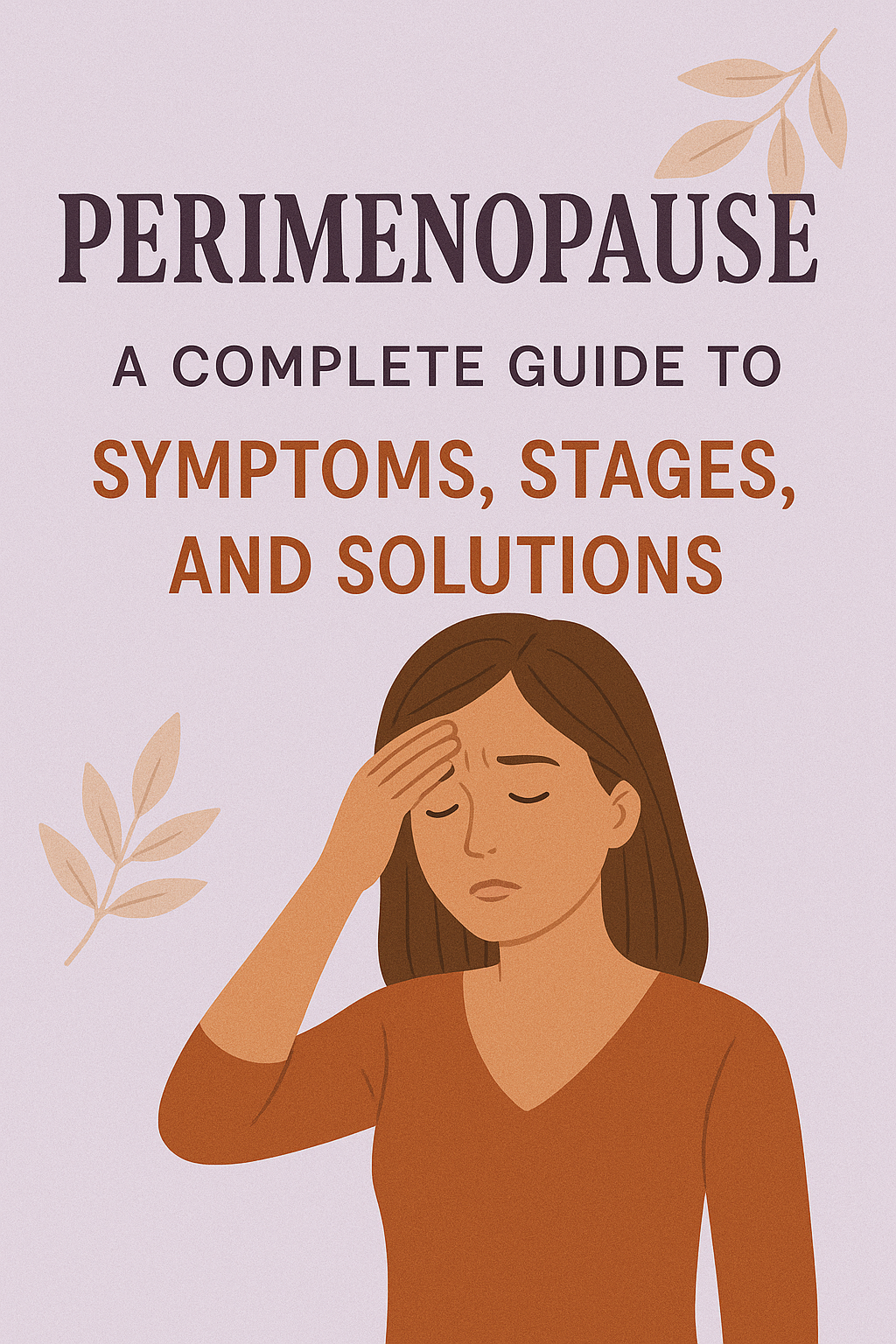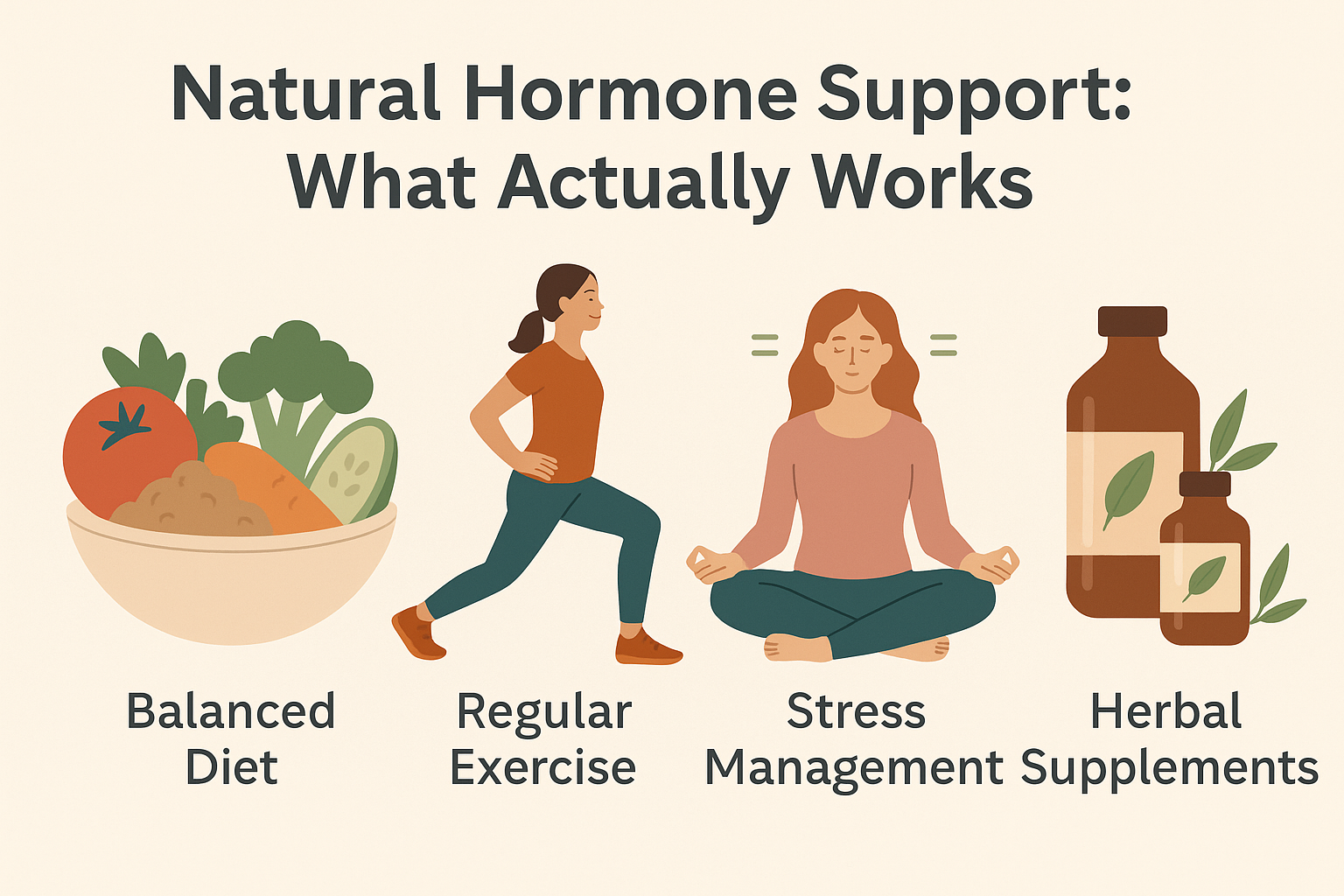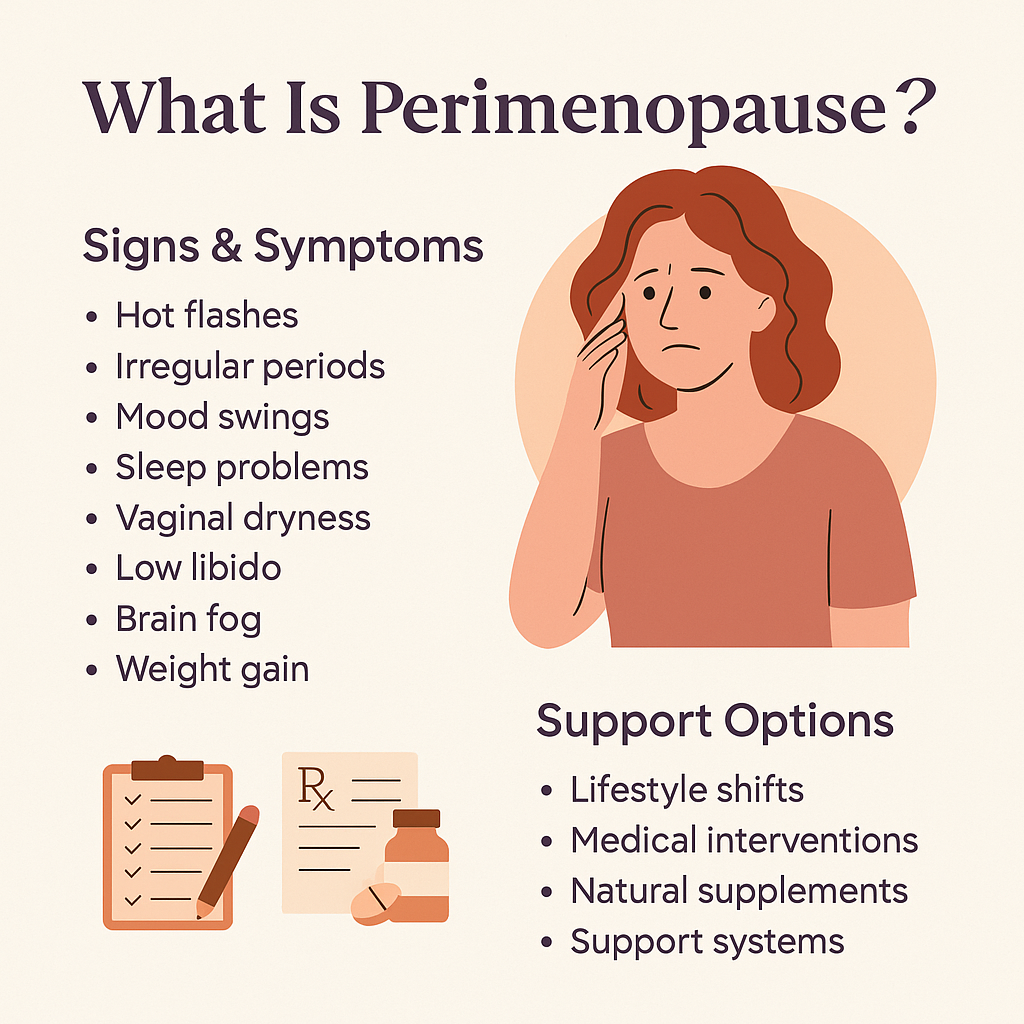
Perimenopause: A Complete Guide to Symptoms, Stages, and Solutions
What is Perimenopause?
Perimenopause is the natural transition period leading up to menopause, typically beginning in a woman’s 40s but sometimes as early as the mid-30s. It’s driven by hormonal fluctuations, primarily involving estrogen and progesterone. Unlike menopause, which is defined as 12 consecutive months without a menstrual cycle, perimenopause is the “in-between” phase when the body starts signaling the end of reproductive years.
During this time, women often experience a variety of symptoms ranging from irregular cycles to hot flashes, mood changes, and sleep disturbances. While it can feel overwhelming, understanding this stage of life empowers women to manage it with confidence.
When Does Perimenopause Start?
Most women enter perimenopause between ages 40–44, but genetics, lifestyle, and health conditions can cause it to occur earlier or later.
Early Signs to Watch Out For
- Shorter or longer menstrual cycles
- Heavier or lighter periods
- Night sweats and hot flashes
- Increased irritability or anxiety
- Sudden weight gain, especially around the midsection
Common Symptoms of Perimenopause
Symptoms vary from woman to woman, but some of the most common include:
- Irregular Menstrual Cycles: Periods may become unpredictable in flow and frequency.
- Hot Flashes & Night Sweats: Sudden waves of heat, often disrupting sleep.
- Mood Changes & Anxiety: Emotional fluctuations can feel like intense PMS.
- Sleep Disturbances: Difficulty falling or staying asleep.
- Weight Gain & Metabolism Shifts: Many women notice changes in body composition.
Stages of Perimenopause
- Early Perimenopause: Cycles remain regular but shorter, and subtle symptoms begin.
- Late Perimenopause: Menstrual cycles become more irregular and symptoms more pronounced until periods eventually stop altogether.
Causes and Risk Factors
Perimenopause is primarily caused by hormonal shifts, especially declining estrogen levels. However, risk factors like smoking, chronic stress, poor diet, or genetics can influence how early or severely symptoms appear.
Natural Remedies for Perimenopause
- Diet & Nutrition: A diet rich in whole foods, calcium, and omega-3 fatty acids can ease symptoms.
- Exercise & Stress Management: Yoga, meditation, and cardio support hormonal balance.
- Herbal Supplements: Black cohosh, red clover, and evening primrose oil are often used, though medical guidance is recommended.
Medical Treatments and Therapies
- Hormone Replacement Therapy (HRT): Helps balance estrogen and progesterone, reducing hot flashes and bone loss risk.
- Non-Hormonal Medications: SSRIs, gabapentin, or sleep aids may help with specific symptoms.
Spotlight: VitalEdge’s Hormone Harmony
In addition to traditional medical and lifestyle options, many women explore supplements to support their hormonal transition.
VitalEdge’s Hormone Harmony is a popular daily supplement designed for women 35+ navigating perimenopause. It includes:
- DIM (supports estrogen balance)
- Maca (energy & vitality)
- Ashwagandha (stress & mood support)
- Vitamin E (antioxidant & cell protection)
Why Women Consider It
Some women prefer non-prescription support—either alongside or in place of hormone therapy (if not suitable candidates). Hormone Harmony is marketed to promote balance, energy, and stress relief during perimenopause.
Important Note
While many users report benefits, scientific evidence on supplements is mixed. Always consult your healthcare provider before adding Hormone Harmony or any supplement, especially if you take medications or have hormone-sensitive conditions.
Mental and Emotional Health During Perimenopause
Perimenopause isn’t just physical—it deeply impacts mental health. Building a support system, seeking therapy when needed, and practicing self-care are essential for emotional well-being.
Perimenopause and Fertility
Yes, it’s still possible to get pregnant during perimenopause, as ovulation can be unpredictable. Women who wish to avoid pregnancy should continue using contraception until menopause is confirmed.
Long-Term Health Considerations
- And Bone Health: Reduced estrogen increases the risk of osteoporosis. Adequate calcium and vitamin D are crucial.
- Heart Health: Estrogen plays a role in cardiovascular protection, so heart disease risk rises post-menopause.
Lifestyle Tips for Thriving During Perimenopause
- Prioritize sleep hygiene with a cool, dark room and bedtime routine.
- Practice mindfulness and relaxation techniques.
- Engage in regular physical activity for energy, mood, and bone health.
FAQs About Perimenopause
1. How long does perimenopause last?
On average, 4–8 years.
2. Can perimenopause cause depression?
Yes, hormonal changes can trigger mood disorders in some women.
3. What’s the difference between perimenopause and menopause?
Perimenopause is the transition; menopause is confirmed after 12 months without periods.
4. Can diet reduce perimenopausal symptoms?
Yes, whole foods, lean protein, and healthy fats can ease hot flashes and mood swings.
5. Do I still need birth control during perimenopause?
Yes, until menopause is confirmed.
6. Is HRT safe?
For many women, yes—though it depends on individual health history. Always consult a doctor.
Conclusion: Embracing the Transition with Confidence
Perimenopause is a natural phase of life, but it doesn’t have to be overwhelming. With the right knowledge, support, and lifestyle adjustments—including options like VitalEdge Advanced Perimenopause and Menopause Support, if appropriate—women can not only manage symptoms but also thrive during this transition. Think of it as a new chapter—one that brings wisdom, resilience, and self-awareness.


